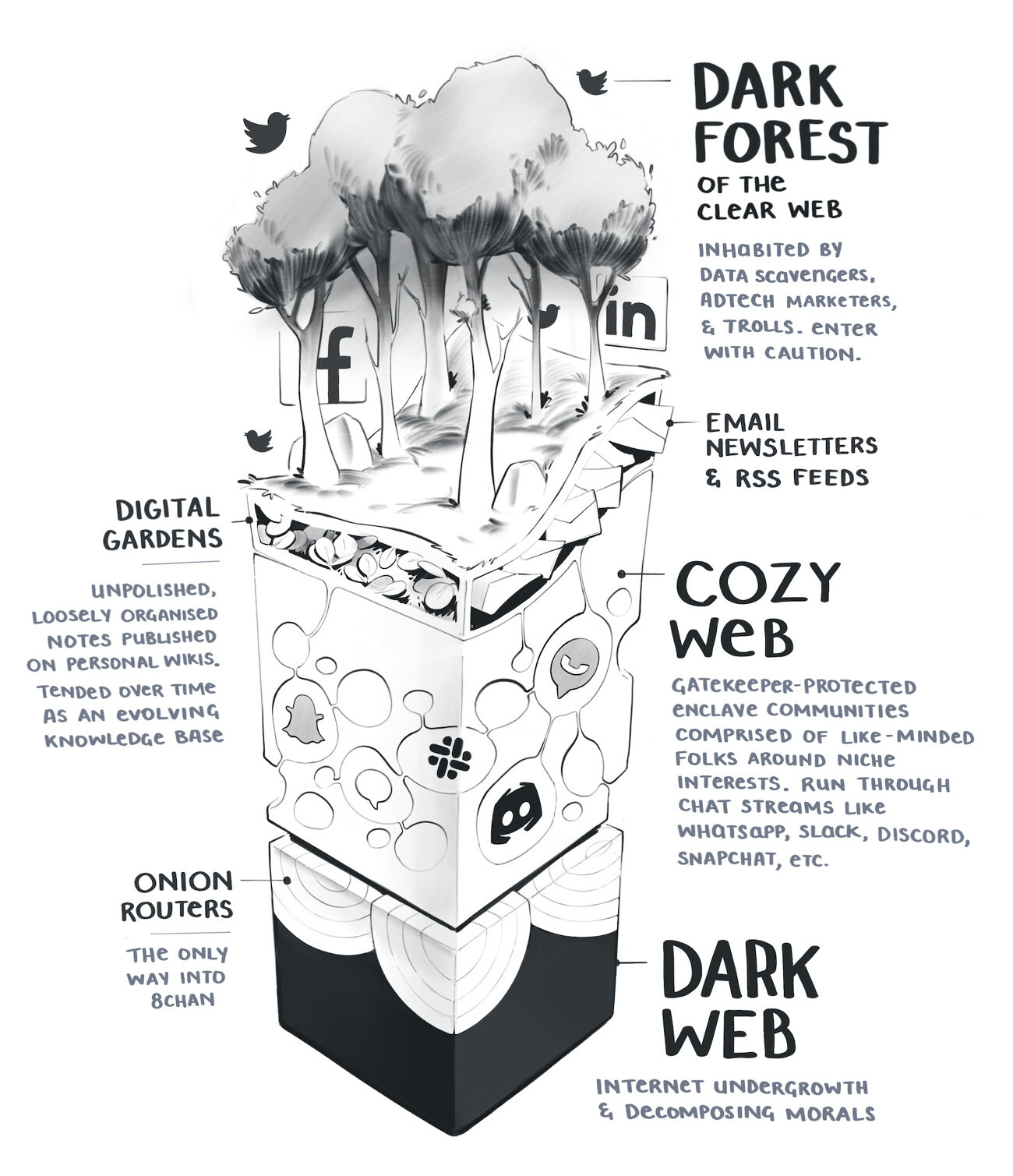🧠 Second Brain
Search
Digital Garden
A digital garden (sometimes also called a Digital Oasis) breaks away from the traditional structure of a “personal blog” or a glossary, which is mainly linear in nature. Unlike these platforms, where content is presented in a series from an index page, a digital garden offers a multi-dimensional exploration. Here, you can delve into the garden, moving inward to discover various interlinked and sometimes unfinished notes, which I refer to as Continuous Notes. These are dynamic, continuously updated with fresh insights, representing a novel category that I believe is the Future of Blogging; see also the different types of Content Online.
In essence, a digital garden is a compendium of evolving ideas, unconstrained by publication dates. Exploring connected notes through contextual associations, primarily backlinks, and visualized as graph view. Platforms like Roam and Obsidian exemplify this concept, embodying interconnected note-taking or what’s known as Second Brain. This approach, where you engage in Compounding Note-Taking, amplifies the value of each note.
These notes are less about rigidity or perfection and more about ongoing evolution and personal expression. My digital garden serves as my personal notes repository, marked with #publish for public viewing. This low-friction approach means the content can range from polished pieces to raw, unstructured thoughts.
Essentially, the Digital Garden is a public Second Brain: a collection of unrefined, loosely organized notes on personal websites that continuously develop as a personal knowledge base.
# Types of Notes
The notes in a digital garden vary in their level of refinement. At one end of the spectrum, we have Evergreen Note or Permanent Note, representing polished, long-standing content destined for my Zettelkasten. Preceding these are the more transient Fleeting Notes and Literature Notes.
“My Taxonomy”
I use Permanent Notes and Evergreen Notes interchangeably. They form the backbone of my note organization system. My Taxonomy of note types provides an overview of how I categorize different levels of notes.
# Example of Digital Gardens
For a deeper understanding, I recommend the article A Brief History & Ethos of the Digital Garden.

Another notable example is Personal Wiki / Digital Garden, which offers extensive information on Personal Knowledge Management (PKM). This site uses a Wiki format, differing from the Linking Your Thinking (LYT) method by Nick Milo. Networked Thought also presents interesting insights.
Discover more through this curated collection by Maggie Appleton. Also, explore Other Public Second Brains for additional examples.
Origin:
A Brief History & Ethos of the Digital Garden
References:
Created 2022-05-18
